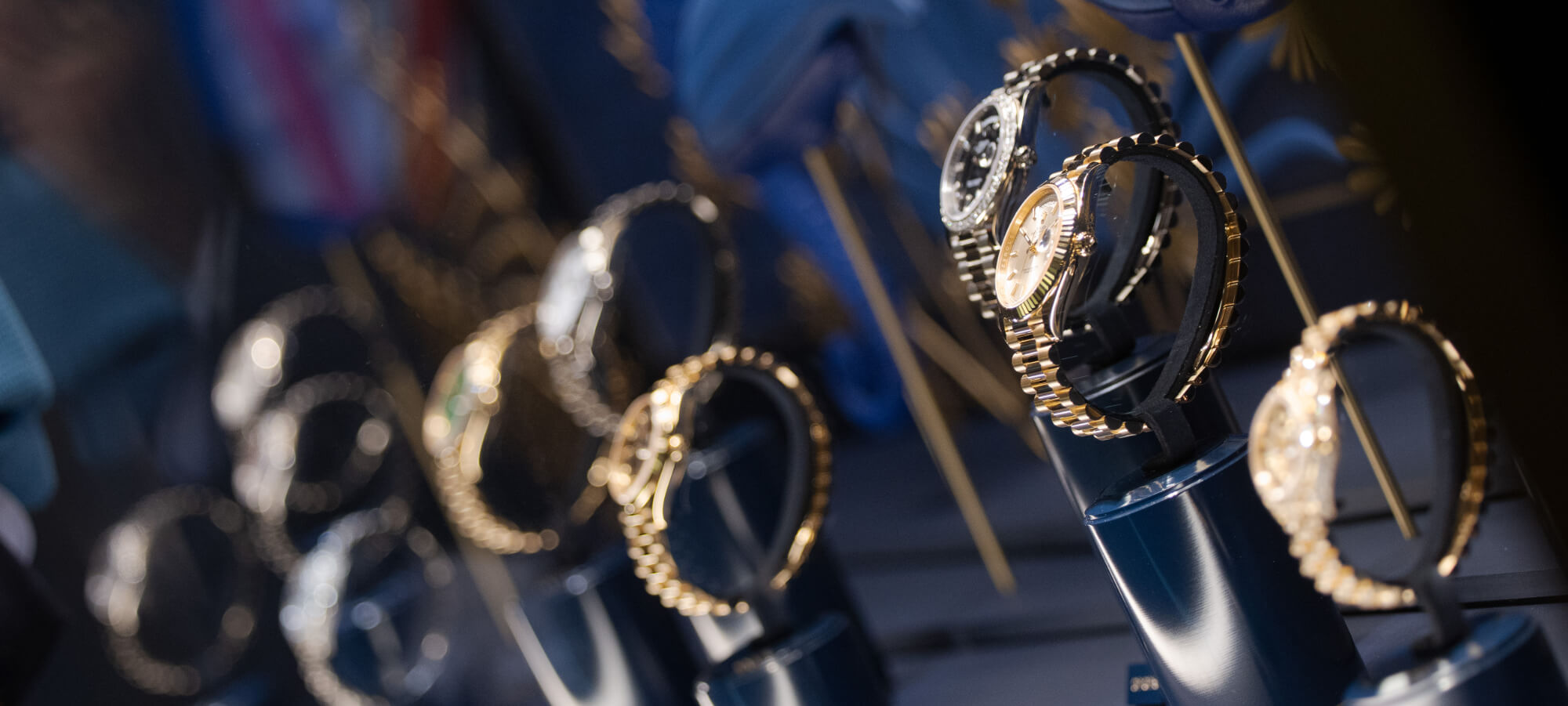
Last week, in my Ariel’s Thoughts column, I discussed the evolution of modern watch product release cycles, specifically exploring brand practices in a digital, post-tradeshow era. I remain concerned about how those practices have a negative impact on everyone: the brands, media, and most of all, the end consumer. I stopped short of making any concrete suggestions, but that’s exactly what I’d like to do with this column.
One of the weirdest things about being a watch enthusiast today is just how many new watches are released. I’m not kidding when I say that brand-new luxury timepieces are released daily, and brands now mostly all choose seemingly random periods across the year to release new products. Timepieces are supposed to be these exclusive, difficult-to-make masterpieces. How, then, is it possible that enough craftspeople worldwide can dedicate so much effort to making new wristwatches? This is, frankly, not the image that the watch industry probably wants to cultivate with the public. The trend of watch brands releasing products frequently is rather new, and it probably isn’t a sustainable practice, to say nothing of the challenges it presents for consumers trying to make purchase decisions. The situation is so bad that aBlogtoWatch team members often joke about watch companies that release new watches seemingly daily or weekly. There are far too many of them, and no one, from their retailers to consumers, seems to think it’s a good idea.
When I first started covering the watch industry about 17 years ago, most watch brands released all of their new products at one time. Frequently, the brands would coordinate these periods together, releasing their new products at the same annual tradeshows. Virtually all sales to consumers happened through distributors and retailers, who went to the tradeshows each year to order their annual inventory of timepieces. Once those timepieces were delivered to the retailer, they could then go on to be sold to consumers. Watch brands consolidated all of their watch releases around single moments when they could sell them wholesale to third parties that would go on to sell them to consumers.
Two major disruptions in the watch industry changed all of this. First, traditional watch tradeshows all but went extinct in favor of a new breed of shows that are a lot more about media attention and networking. Watch brands maintained direct relationships with retailers and met new ones digitally on the internet. Therefore, brands didn’t use the tradeshows to sell their watches, as they could do so throughout the year. The next thing that happened was the aggressive emergence of the direct-to-consumer sales model. Watch brands started setting up their own e-commerce websites and physical retail stores to sell products directly to consumers and bypass middlemen such as third-party retailers. This change in the sales model freed up brands from having to release products at a single time when retailers were around and buying inventory wholesale. The natural tendency became for brands to release products when other brands were not, in the hope that it would result in less competition for consumer attention. Brands could also start to release products when they were actually ready for sale, as opposed to many months in advance when still planning how many total pieces to produce that year. Thus, selling products directly to consumers made it possible for brands to release products when they were ready.
 When watch brands release new products, they tend to notice that the media picks up those releases as news, offering visibility via coverage. Something else that offers visibility is advertising, which tends to cost more money than releasing new products, especially if a brand is later able to sell those products. Brands quickly began to believe that it was a wiser solution for getting visibility to just release a new product as opposed to spending money on advertising. This strategy can only go so far because media and consumers get overwhelmed. That said, watch brands have become nearly addicted to using new product releases when they want brand visibility. More so, the need for visibility is only going up as the number of new products (and even brands) continues to increase over time. The more watches that appear on the market, the harder it is for anyone to learn about, let alone make a decision to buy, any one of them.
When watch brands release new products, they tend to notice that the media picks up those releases as news, offering visibility via coverage. Something else that offers visibility is advertising, which tends to cost more money than releasing new products, especially if a brand is later able to sell those products. Brands quickly began to believe that it was a wiser solution for getting visibility to just release a new product as opposed to spending money on advertising. This strategy can only go so far because media and consumers get overwhelmed. That said, watch brands have become nearly addicted to using new product releases when they want brand visibility. More so, the need for visibility is only going up as the number of new products (and even brands) continues to increase over time. The more watches that appear on the market, the harder it is for anyone to learn about, let alone make a decision to buy, any one of them.
The negative effect on consumers is becoming particularly pronounced. Consumers are so inundated with new potential watches to purchase that it paralyzes or effectively resets their decision-making process. They know they want a watch, but the sheer number of good options makes them too scared to make a poor decision for fear that the next release might be better. The problem is related to why most people buy new watches in the first place. Doing so is a form of retail therapy that allows people to reward and feel good about themselves. Buying a new watch is an essential ritual designed to celebrate oneself. For the emotional outcome of that purchase to be ideal, we need to have very few regrets about the purchase. Since the watch is a representation of how we see and value ourselves, we need it to be as close to perfect as possible. That means watch lovers tend to take a lot of time when making purchase decisions and will quickly select a better option if one seemingly emerges.
In research I’ve done, which has been corroborated with other evidence I have seen from studies in the watch industry, most consumers take at least six to 12 months to make a purchase decision from the time they first learn about a product they will eventually buy. That means a “rapid-decision” consumer takes six months to decide to purchase a watch after first being romanced by it. The problem is that during those six months, so many new watches are released that they can easily get distracted from the initial watch. Assuming their attention does get shifted from one potential watch purchase to another, that six-month clock is likely to be reset. Unless that person has a special occasion to purchase a watch, if they are distracted from the original watch they were intending to buy, it could literally be years before they make a final decision. And during that time, they could be distracted by any number of potential new watches that flirt for their attention. The process can repeat ad infinitum.
 Choice paralysis in its various forms is not a theoretical problem but an active dilemma facing a watch industry that is so highly competitive that only small nuances sway consumers from one product purchase to another. That is something we often need to remember: Watches are fashionable tools that tend to all perform on par with each another. Someone seeking a quality watch experience does not need to look very hard. The purchase decision we make rests upon what we can afford and those small differences between products that help sway us. It is as though someone is in a room full of very attractive potential partners. With any one of those people potentially being a great match, where does one spend his or her attention first? This same phenomenon happens when watch brands seek to get consumers to buy their pretty products. The reality is that watch consumers have a plethora of good choices available to them at any given time.
Choice paralysis in its various forms is not a theoretical problem but an active dilemma facing a watch industry that is so highly competitive that only small nuances sway consumers from one product purchase to another. That is something we often need to remember: Watches are fashionable tools that tend to all perform on par with each another. Someone seeking a quality watch experience does not need to look very hard. The purchase decision we make rests upon what we can afford and those small differences between products that help sway us. It is as though someone is in a room full of very attractive potential partners. With any one of those people potentially being a great match, where does one spend his or her attention first? This same phenomenon happens when watch brands seek to get consumers to buy their pretty products. The reality is that watch consumers have a plethora of good choices available to them at any given time.
The good news is that watch brands are getting exhausted from the constant releases. Many of them complain that seemingly all they do is go from one release to another, never properly giving enough love to any one release, and not having much time for any of the other things a brand needs to focus on. Retailers are similarly weary of all the new releases, and as I have discussed above, so are consumers. Pretty much the only people who benefit from constant watch releases are the factories and maybe some finance people who think this is a particularly clever way of avoiding as much advertising expenditure. They have fewer and fewer sympathizers.
What is the solution? As is sometimes the case, it lies in the past: Brands should release all of their new products at one time during the year. Not all brands need to choose the same time of the year, but when a brand releases new products, it should be at one time. On that release occasion, they should list out all of the new watches intended to be released that year, allowing the media to cover them whenever they want. For consumers, this would be a big win. I believe people would prefer to see all the new things a brand is coming out with and then decide if any of those watches are right for them. Consumers will be protected from the fear that an even better product from the same brand will be released around the corner. This fear stops many sales and deeply frustrates many consumers. If a consumer is safe knowing that nothing better from the brand will come out for at least a year, I think they will be far more likely to make a purchase decision.
Media will have plenty to talk about because it isn’t as though the total number of watches being released is much lower, it is just happening over more stable periods of time. Brands would likely choose different moments throughout the year, and that means the media would regularly be busy covering a brand’s entire new collection, then moving on to the news from another brand. Even though there will still be a lot of new releases across the year, it won’t feel as random, and brands will individually be freed from having to release product news more than once per year.
 After a watch brand releases its new products for the year, it will then take the rest of the year to reinforce those messages and ensure that the widest possible net of consumers learns about its new products. One of the oddest fallacies I’ve noticed in today’s watch industry is that so many marketing people have entirely unrealistic notions of how long it takes the wider consumer public to learn about new timepieces. Sharing their message with watch enthusiasts who read about timepiece news regularly is just the beginning. They then need to expand their message to all the watch consumers who aren’t intellectually interested in the hobby enough to read about watches outside of when they want to purchase something. Watch companies should become wiser about just how long it takes for their messages to spread through the consumer public. Even within the watch enthusiast community, it can take months for the entire population to learn about new products, even if they are heavily promoted.
After a watch brand releases its new products for the year, it will then take the rest of the year to reinforce those messages and ensure that the widest possible net of consumers learns about its new products. One of the oddest fallacies I’ve noticed in today’s watch industry is that so many marketing people have entirely unrealistic notions of how long it takes the wider consumer public to learn about new timepieces. Sharing their message with watch enthusiasts who read about timepiece news regularly is just the beginning. They then need to expand their message to all the watch consumers who aren’t intellectually interested in the hobby enough to read about watches outside of when they want to purchase something. Watch companies should become wiser about just how long it takes for their messages to spread through the consumer public. Even within the watch enthusiast community, it can take months for the entire population to learn about new products, even if they are heavily promoted.
With just a few exceptions, I can’t think of watchmaking businesses out there that cannot organize around a single launch period per year. They used to do that, and it worked out well enough. I don’t think the reasons for abandoning slower product release cycles were very compelling, and I think brands will earn respect and revenue by simply launching all of their annual releases during one period. That doesn’t mean they can’t have fun events across the year, mainly because it takes so much effort and time to fully spread messages about novelty and product freshness.
I don’t expect the entire watch industry to take my advice and follow it with immediacy, but I do think my suggestion is where the industry is probably going. My two strongest pieces of evidence for this are not only how fatigued consumers and retailers are from the constant new product release cycle, but also how tired people at brands are becoming. My guess is that more than a few people working at watch brands who read this are thinking, “I wish we could start doing that immediately.” It will take time. What do you think? Should watch brands each choose a time during the year to release all of their new watches, as opposed to randomly staggering them out? Something else? Or is the current release cycle a good idea in your opinion? Let me know in the comments below.

